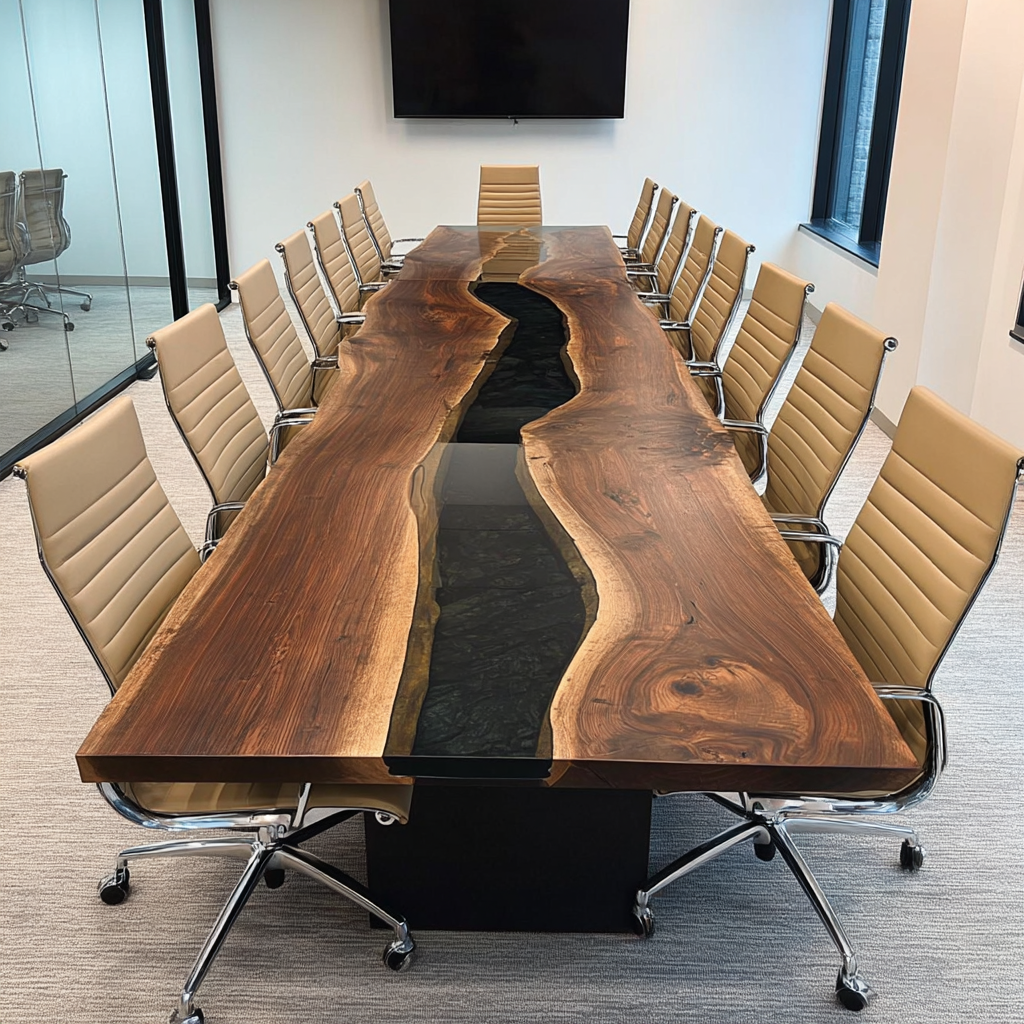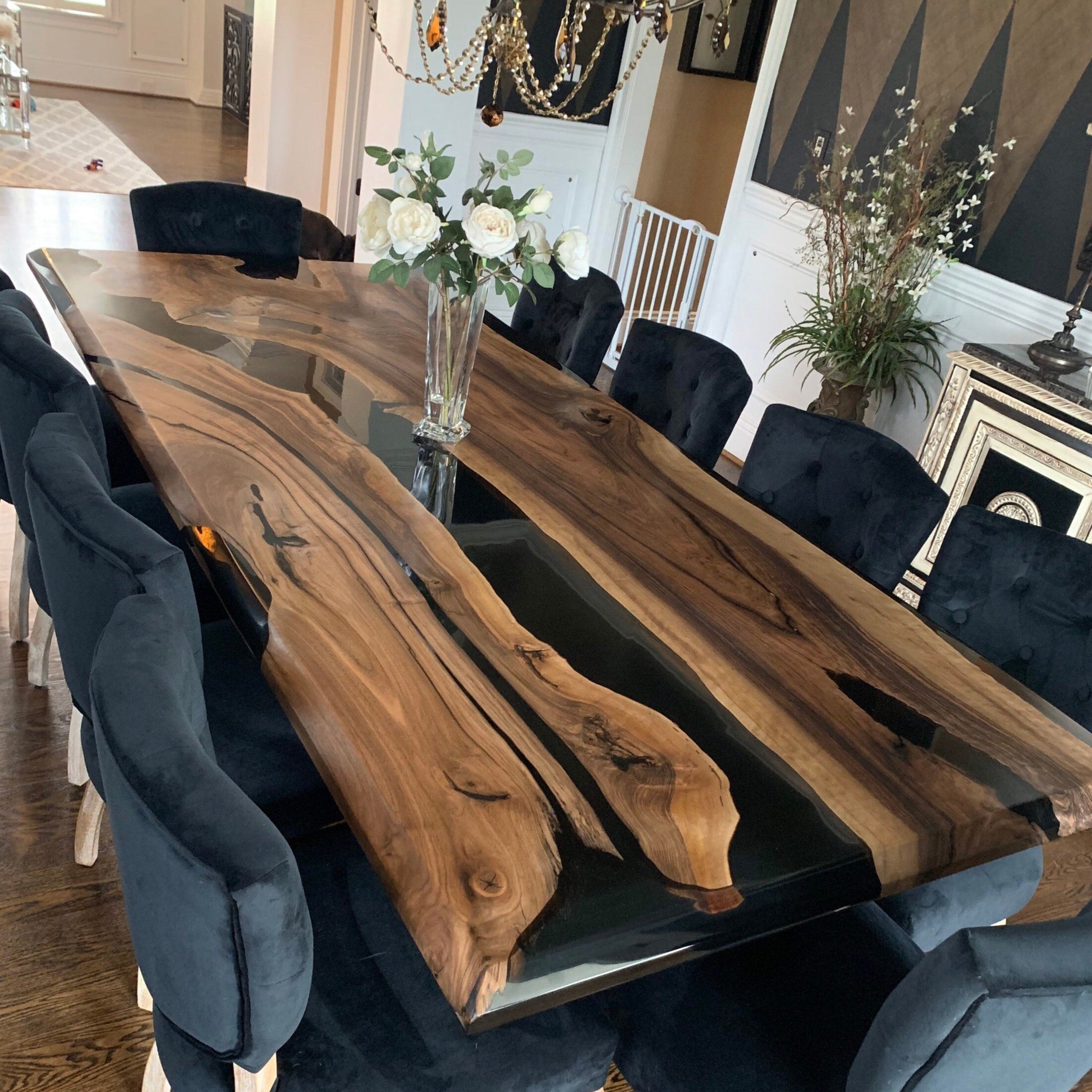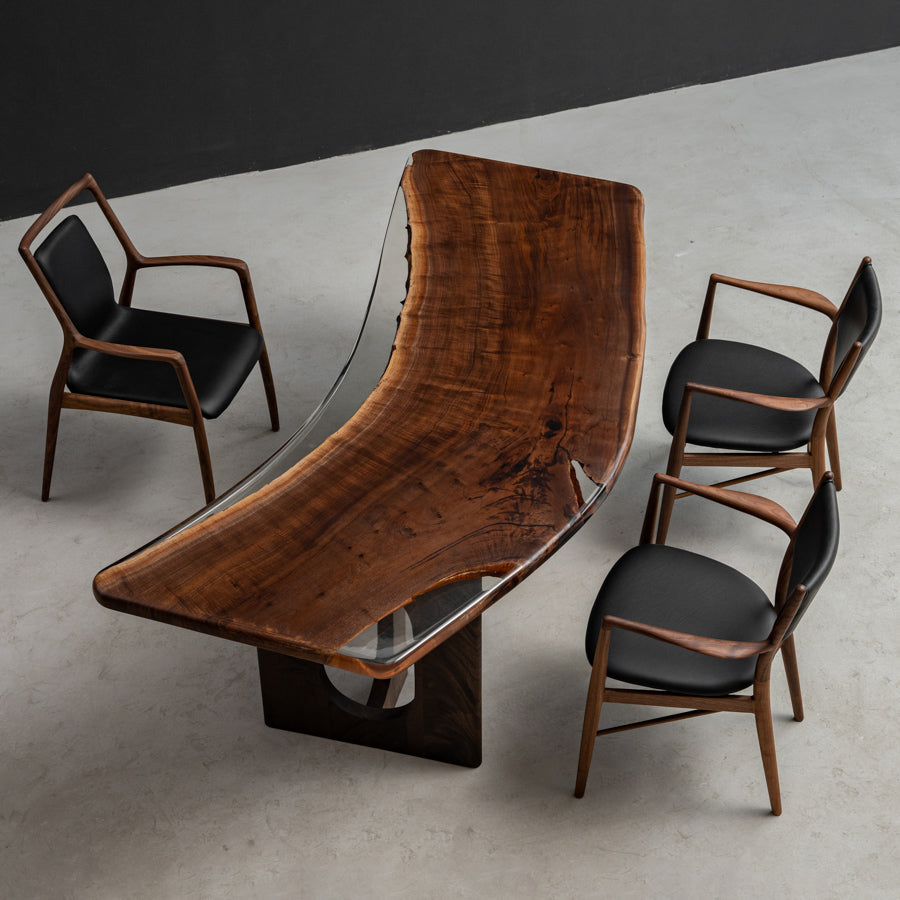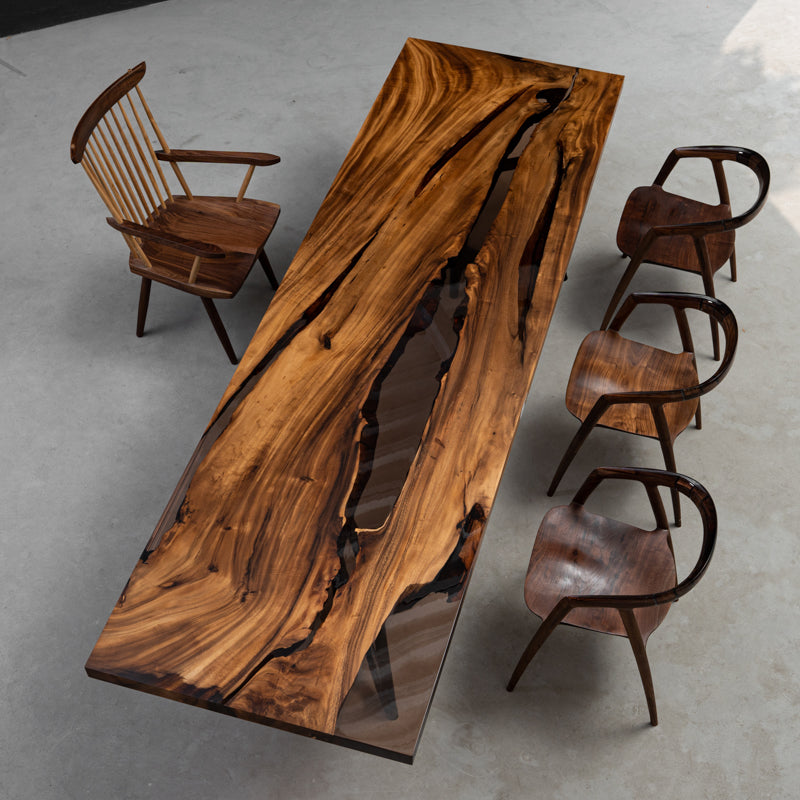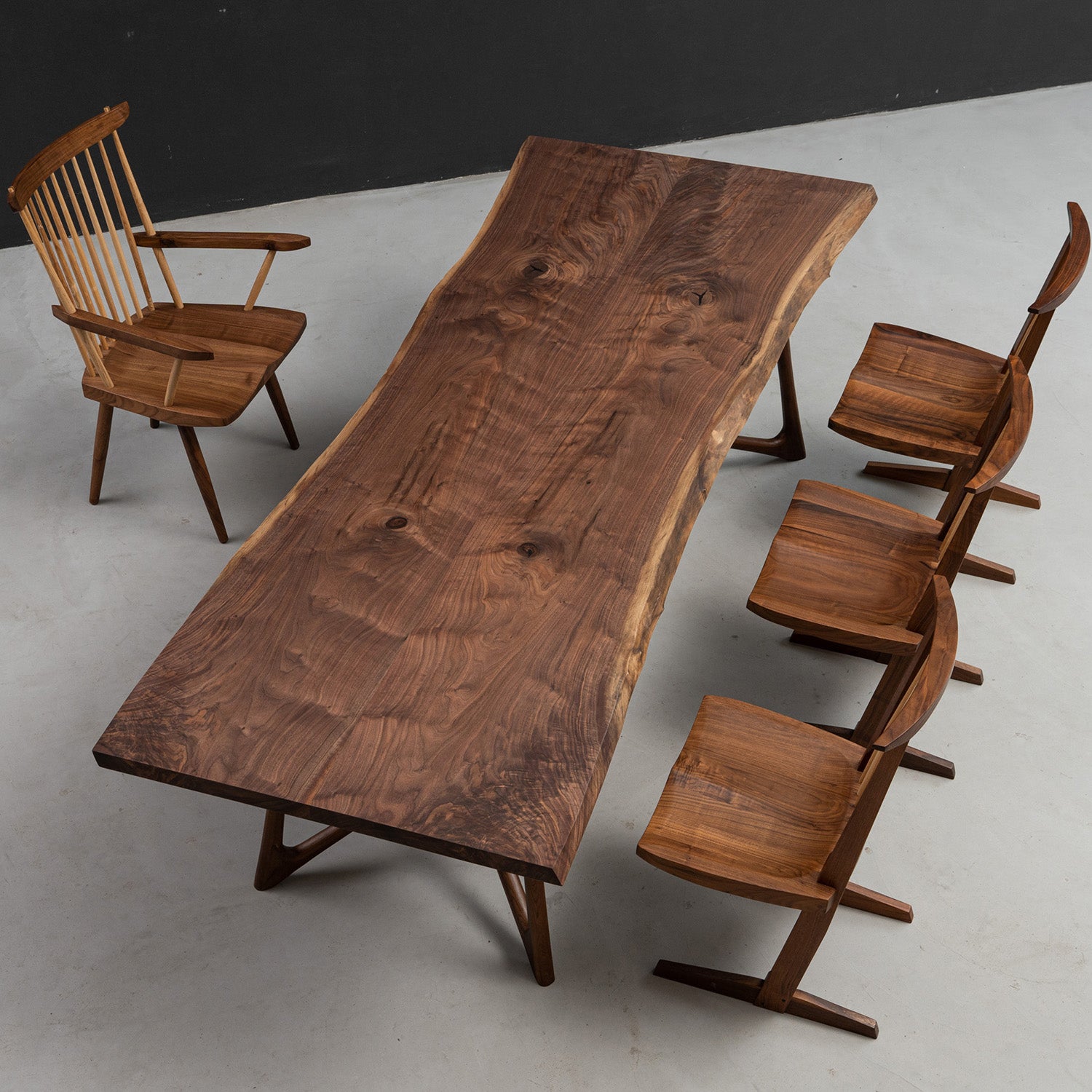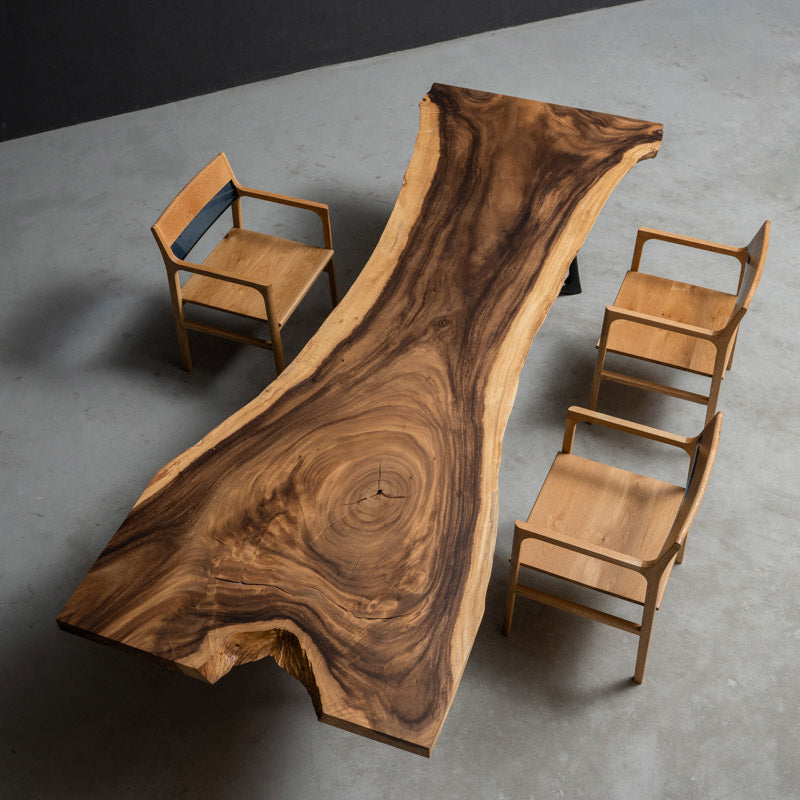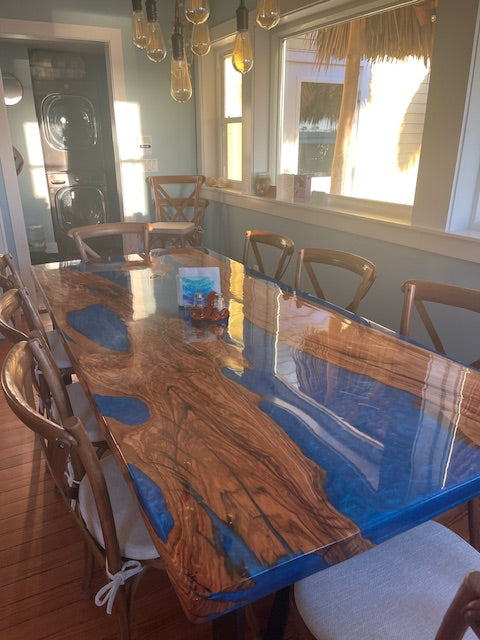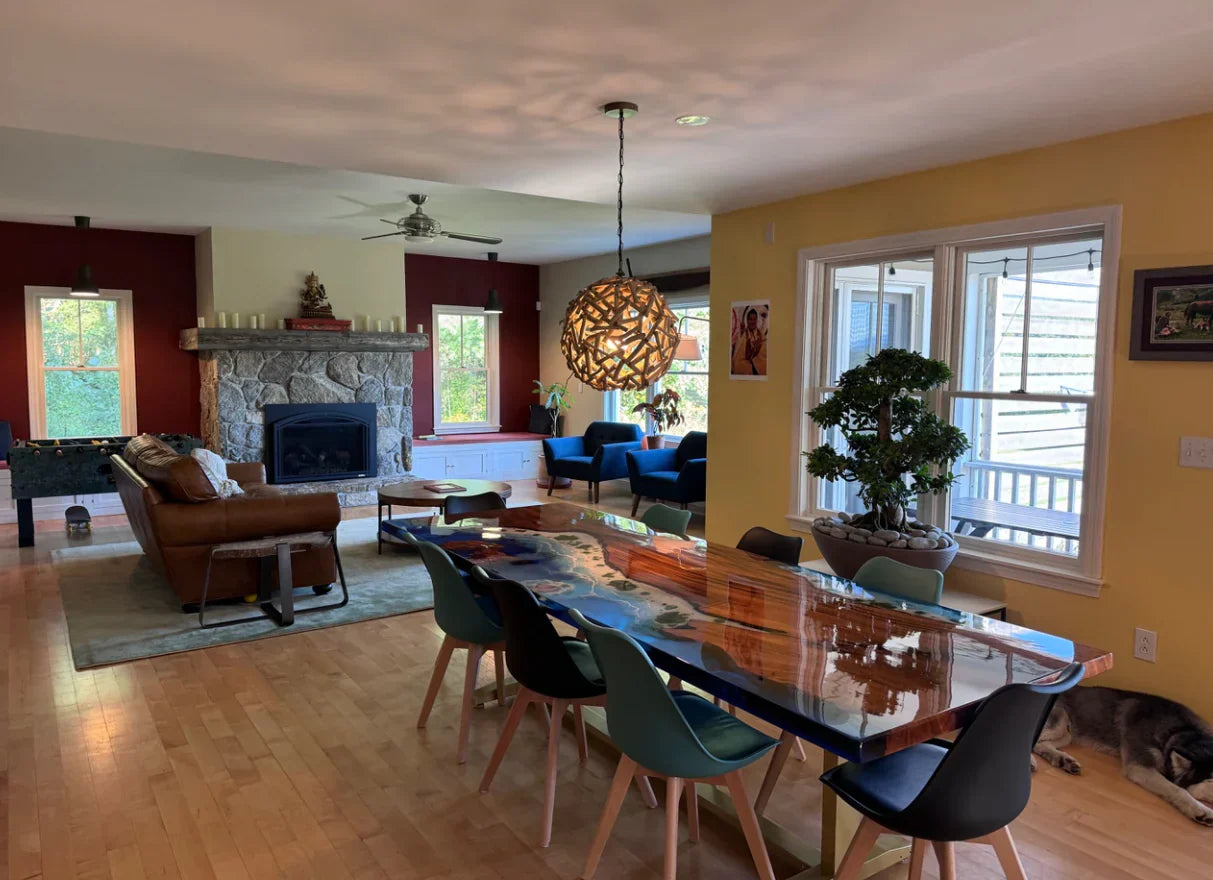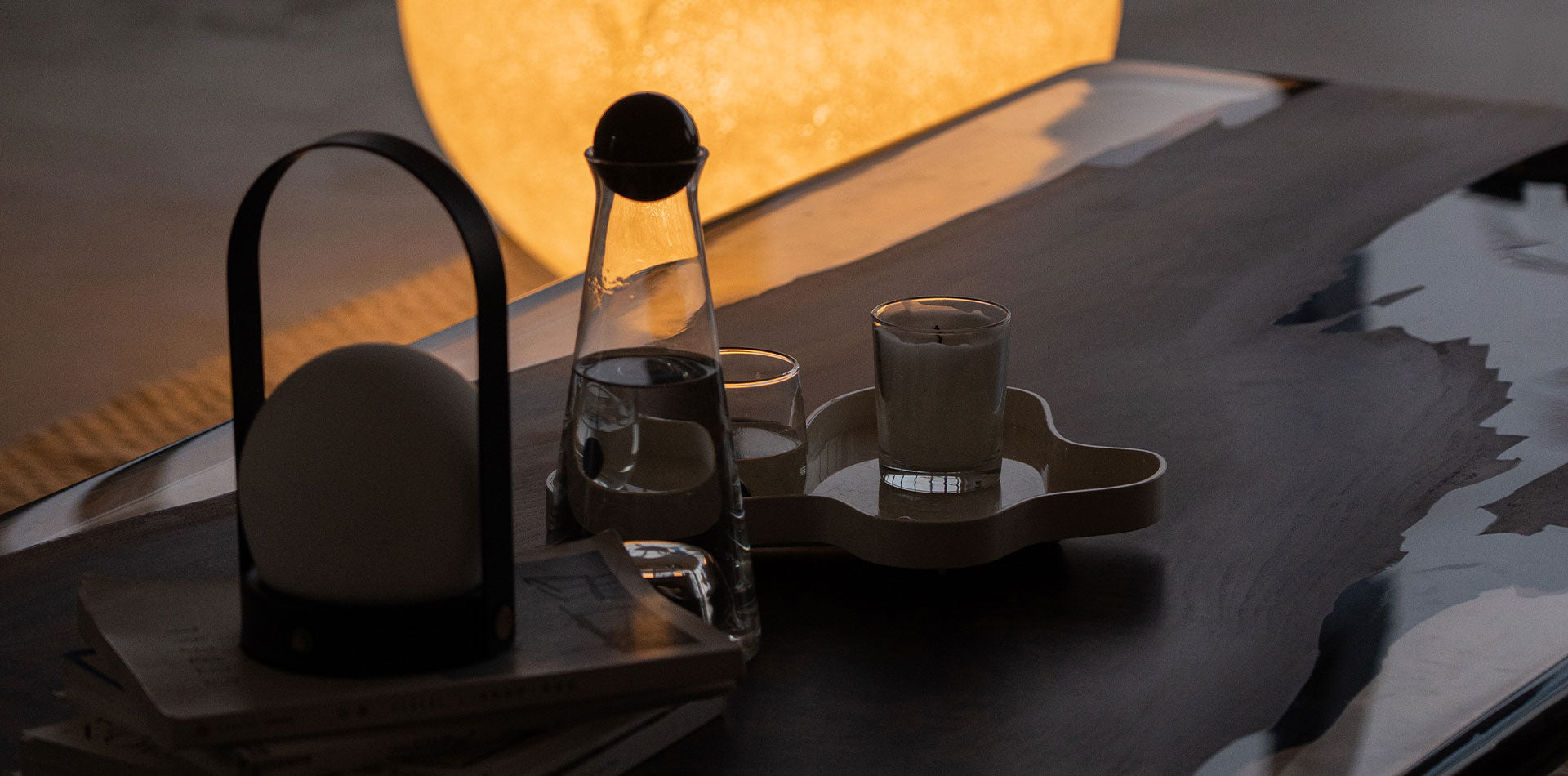In the world of modern furniture, wood epoxy resin tables have emerged as a striking fusion of natural beauty and artistic innovation. Whether used in dining rooms, offices, or as centerpiece coffee tables, these wood and epoxy creations have become increasingly popular. Among the various wood types used for epoxy tables, black walnut and poplar are two common options—but they differ significantly in terms of price and perceived value.
Material Quality and Aesthetic Value
The first and most obvious reason is the difference in wood quality. Black walnut is a premium hardwood, renowned for its deep, rich chocolate-brown tones, complex grain patterns, and luxurious feel. It has a naturally elegant appearance that doesn't require heavy staining or artificial enhancement.
In contrast, poplar is a more affordable, soft hardwood. Its light coloration and relatively plain grain make it a less desirable option in high-end furniture. While it can be stained to mimic other woods, it lacks the natural depth and character of walnut.
When incorporated into an epoxy table, walnut simply delivers a more stunning and high-end visual appeal—making it a favorite for luxury interiors and custom commissions.
Durability and Longevity
Black walnut is significantly more durable than poplar. As a dense hardwood, it resists denting, scratching, and warping over time. This makes black walnut epoxy tables an investment piece that can last for decades, maintaining their strength and finish even under heavy use.
Poplar, on the other hand, is softer and more prone to surface damage. While still suitable for epoxy projects, it doesn’t hold up as well under wear and tear, making it less ideal for frequently used dining or working surfaces.
When customers pay for black walnut, they're also paying for longevity, which factors into the higher price point.
Rarity and Market Demand
Black walnut is a slower-growing tree and is not as widely available as poplar. This natural scarcity, especially for large, knot-free slabs used in epoxy tables, drives up its market value. Sourcing a single, live-edge slab of black walnut suitable for a wood epoxy table can cost several times more than an equivalent piece of poplar.
Moreover, the demand for black walnut epoxy tables has grown in recent years, particularly in luxury and custom furniture markets. Designers and clients alike seek out black walnut for its prestige, which further inflates its price due to high demand and limited supply.
Workability and Craftsmanship
Creating a black walnut epoxy resin table requires a higher level of craftsmanship. Black walnut can be more challenging to work with due to its density, and artisans must take greater care during cutting, sanding, and finishing. Its darker color also requires attention to detail when pouring epoxy, as any mistake can be more visible than on lighter woods like poplar.
Poplar is easier to cut and shape, which can reduce labor costs during production. However, this ease of use is also one reason it’s seen as a “budget” option rather than a premium one.
Perception of Luxury
Ultimately, price is often a reflection of perceived value. A black walnut wood epoxy table carries an image of luxury, exclusivity, and timeless design. It’s a showpiece that tells a story—not just of natural beauty, but of expert craftsmanship and refined taste.
Poplar epoxy tables, while beautiful in their own right, are often seen as entry-level alternatives. They can be perfect for casual interiors or budget-conscious buyers, but they don’t offer the same prestige as black walnut.
Choosing between a black walnut epoxy table and a poplar epoxy table depends on your budget, aesthetic preferences, and intended use. If you're seeking a durable, luxurious centerpiece with long-term value, black walnut is worth the investment. On the other hand, poplar can be an excellent choice for those who want the beauty of a wood epoxy table without the premium price tag.
Whether you're furnishing a dining room, an office, or a creative space, understanding the differences between these two wood types can help you make a more informed and satisfying purchase.

